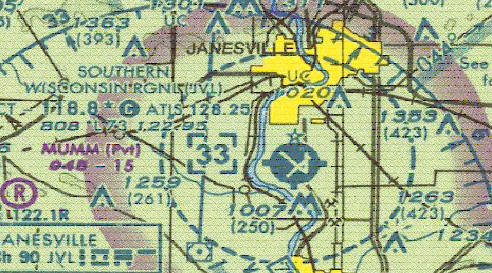Home
AC103-6
AC103-7
Accident Reporting
AIM
AeroMedical
Airport Security
Airport Markings
Annual Inspection
ASTM
Board Members
Contact NAPPF
Density Altitude
Endorsements
Flight Parks
Flight
Instruction
Flight
Instruments
Flight Plan
Formation Flying
Hints
History
Home
Insurance
Knowledge Test
LINKS
Light
Sport Aircraft Process
NAPPF UPDATE
Navigation
News
NOTAM
NPRM
Pilot
Privileges & Limitations
Pilot/Instructor Requirements
Part 103
Part 103 Preamble
Radio
Resources
Sectional Charts
Sport
Pilot Topics
TFR
Training
Training Materials
UltraFlight
Magazine
UltraFlight Radio
Visibility & Cloud
Clearance
Visual Approach Slope Indicator (VASI)
Weather
Weather Services
Home
NAPPF
Radio
Communications
Communication at Airports without operating Control Towers
CTAF
COMMON TRAFFIC ADVISORY FREQUENCY (CTAF) - A designated
frequency for the purpose of carrying out
airport advisory practices while operating to or from an
airport that does not have a control tower or an airport where
the control tower Is not operational.
Self announce
The CTAF is normally a UNICOM, MULTICOM, flight service
station (FSS) frequency, or a tower frequency.
CTAF will be identified in appropriate aeronautical
publications.
UNICOM
UNICOM stations may provide pilots, upon request, with
weather information, wind direction, the recommended
runway, or other necessary information.
If the UNICOM frequency is designated as the CTAF, it will be
identified in appropriate aeronautical publications.
FSS (Flight Service Station)
An FSS physically located on an airport may provide airport
advisory service (AAS) at an airport that does not have a
control tower or where a tower is operated on a part-time
basis and the tower is not in operation.
The CTAFs for FSSs which provide this service are published
in appropriate aeronautical publications.
MULTICOM
A mobile service, not
open to public correspondence use, used for essential communications in the
conduct of
activities performed by or directed from private aircraft.
Airports without Operation Control Towers
C CTAF
(Common Traffic Advisory Frequency)
Marked on the Sectional Chart
Common CTAF Frequencies
122.7
122.725
122.8
122.9
123.0
123.05
123.075
Airports with no frequencies published
MULTICOM - 122.9
When to communicate
Before taxiing and before taxiing on the runway for departure.
10 miles out, and entering downwind, base, and final, and leaving the
runway.
Weather Advisories at airports without operating Control Towers
AWOS, ASOS (Automated Weather Observation System,
Automated Surface Observation System)
Frequency marked on the Sectional Chart
AWOS - These real-time systems are operationally
classified into four basic levels:
(a) AWOS-A: only reports altimeter
setting,
(b) AWOS-1: usually reports altimeter
setting, wind data, temperature, dew point, and density altitude,
(c) AWOS-2: provides the information
provided by AWOS-1 plus visibility, and
(d) AWOS-3: provides the information
provided by AWOS-2 plus cloud/ceiling data.
The information is transmitted over a discrete VHF
radio frequency or the voice portion of a local NAVAID.
Receivable to a maximum of 25 NM from the AWOS site and a
maximum altitude of 10,000 feet AGL.
Most AWOS sites also have a dial-up capability so that
the messages can be accessed via telephone.
AWOS information (system level, frequency, phone number,
etc.) is published, in the Airport Facility Directory
ASOS - The ASOS will provide continuous minute-by-minute
observations and perform the basic observing functions necessary to generate an
aviation routine weather report (METAR) and other aviation weather information.
CTAF, AWOS/ASOS on the Sectional Chart

ASOS - 118.526
C CTAF
(Common Traffic Advisory Frequency) - 122.8
Airports with Control Towers
Control Tower Frequency (CT)
Control of traffic in the controlled
airspace
Frequency on the Sectional Chart
ATIS - Automated Traffic Information System
This information includes: wind,
runway, and altimeter setting at the airport of intended landing.
Control Tower and ATIS Frequencies on the Sectional Chart

CT - 118.8
ATIS - 128.5
Unicom - 122.95
* Hours of Operation
C CTAF
(Common Traffic Advisory Frequency) - 118.6
Air to Air Communication Frequency
122.75 - Official air
to air
123.45 - not so official
Reference
AC 90-42F - TRAFFIC ADVISORY PRACTICES AT AIRPORTS
WITHOUT OPERATING CONTROL TOWERS
Part 1 of what you need to know about aviation band radios. Jim Sweeney chats with us about aviation band radios and how to get them to work on your ultralight aircraft. www.nappf.com (7/1/03)
Jim Sweeney, NAPPF
Part 2 of what you need to know about aviation band radios. We get into details about radio antennas and their mountings. Selecting radios and matching it to your headsets. www.nappf.com (7/1/03)
Text & Graphics for the Sound Clip
|
1. WHO You Are Calling 2. WHAT You Are 3. WHERE You Are 4. WHAT You Want |
The Phonetic Alphabet
|
Alpha (Al-fah) Bravo (Brah-voh) Charlie (Char-lee or Shar-lee) Delta (Dell-tah) Echo (Eck-oh) Foxtrot (Focks-trot) Golf (Golf) Hotel (Hoh-tel) India (In-dee-ah) Juliett (Jew-lee-ett) Kilo (Kee-loh) Lima (Lee-mah) Mike (Mike) November (No-vem-ber) Oscar (Oss-cah) Papa (pah-pah) Quebec (Keh-beck) Romeo (Roh-me-oh) Sierra (See-air-rah) Tango (Tang-go) Uniform (You-nee-form) or (oo-nee-form) Victor (Vic-tah) Whisky (Wiss-key) Xray (Ecks-ray) Yankee (yang-key) Zulu (Zoo-loo) |
Phonetic Numbers
|
One (Wun) Two (Too) Three (tree) Four (Fow-er) Five (Fife) Six (Six) Seven (Sev-en) Eight (Ait) Nine (Nin-er) Zero (Zee-ro) |
Airport Information for Salem, IL Airport

